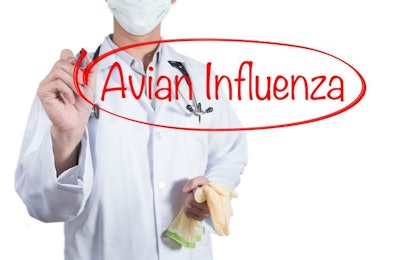
Proper disinfection is crucial to preventing the transmission of avian influenza and other infectious between poultry flocks and houses..
“Once avian influenza starts, it spreads,” Rich Prinz, global VP of sales, EvaClean, said. “It typically starts in one barn and from there, segregation is the only option, because if it spreads, it just continues to spread. From there, it’s nearly impossible to stop.”
Setting up the right disinfection protocols
It’s important for poultry producers to create a detailed cleaning and disinfecting protocol that occurs every day in the hatchery, which is typically where outbreaks begin.
“When you’re factoring in the hatchery, there’s more to consider than controlling avian influenza. You also want to make sure that you’re not using a toxic product,” he explained.
“You want to make sure that you have a proactive approach, but also that you are utilizing something that’s not harmful for people or animals.”
Prinz suggests selecting a disinfectant that is approved by the Environmental Protection Agency (EPA). In addition, research has shown that cleaners with a neutral pH are more effective against avian influenza than those that are more acidic or alkaline.
Besides the hatchery, poultry producers should also make sure they follow the proper disinfection steps when it comes to their shoes, truck and everything else related to the poultry house. These are all items that can spread disease between poultry houses.
“You want to make sure there’s no risk for transmission,” said Prinz. “You’re really looking to make sure you’re very much applying a proactive approach as opposed to a reactive approach. And then, the reactive approach where there is that high risk is disinfecting and cleaning everything – more so than you do on a regular basis.”
In 2022, highly pathogenic avian influenza (HPAI) has been confirmed in the following U.S. states: Pennsylvania, Michigan, Wisconsin, Oklahoma, Minnesota, North Dakota, South Dakota, Nebraska, Kansas, Iowa, Missouri, Kentucky, Indiana, Colorado, North Carolina, Delaware, Maryland and Utah. The virus has also been found in commercial game bird operations in Texas, New York and South Dakota.
To learn more about HPAI cases in North American commercial poultry flocks, see an interactive map on WATTPoultry.com.
Read our ongoing coverage of the global avian influenza outbreak.


















